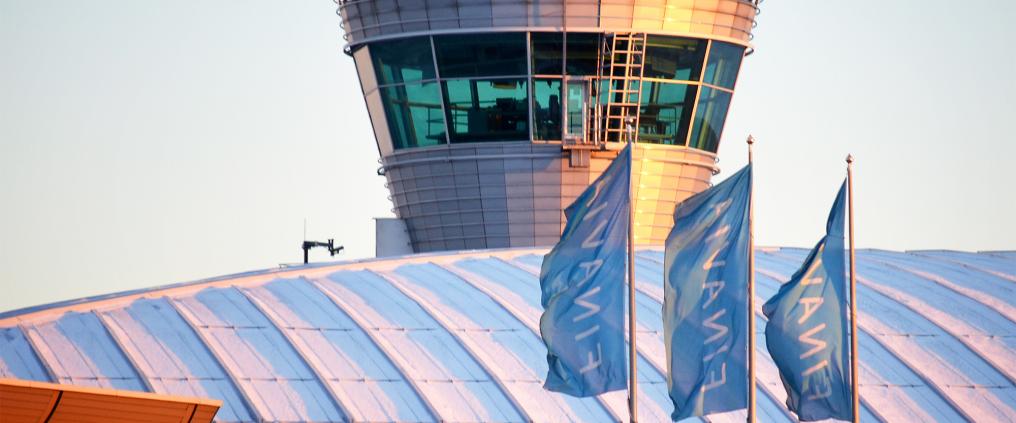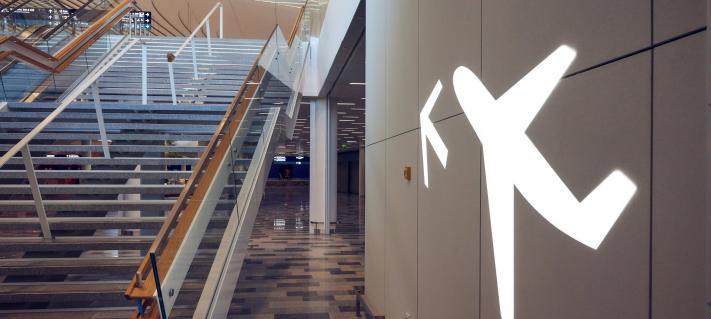In this year's survey, Finland came behind Singapore, the United Arab Emirates, Hong Kong, the Netherlands, the United States, Qatar and Switzerland. On a scale from 1 to 7, Finland scored 6.1. Finland came in fifth in the previous survey.
Respondents to the survey assessed the sophistication, coverage and efficiency of air transport infrastructure in their own country. Finland's airport network is owned and operated by Finavia Corporation.
“Competition over airlines and passengers between different countries and their key airports is becoming fiercer and fiercer. There is no shortage of airports aiming to become main hubs in air traffic. That is why it is wonderful to see that Finland has succeeded in the competition over international transfer traffic. We have a solid market position in traffic between Europe and Asia. Our hub provides Finland with flight connections that support our economic competitiveness in more ways than one,” says Kari Savolainen, CEO of Finavia Corporation.
“Our excellent position in the WEF survey indicates that our airport network offers inexpensive and high-quality services to airlines and their passengers. Finnish airports do not restrict the growth of traffic in any way; rather, they strengthen the competitiveness of air traffic in Finland. Even though Finland has invested heavily in its air transport infrastructure, so have others. The countries that are ahead of us in the survey show more even stable demand for airport services than Finavia's network of 24 airports. Finland already has airports where commercial route traffic has been discontinued, which is a significant financial factor for Finavia,” Savolainen says.
Thanks to transfer traffic, Finnish people have access to superior connections to all parts of the world, considering the number of inhabitants. For example, Helsinki Airport offers connections to 130 destinations. Transfer traffic increases demand in Finnish air traffic markets and offers opportunities to increase the tourism business.
“Every year, 16 million passengers travel through Helsinki Airport, most of whom are transfer passengers. We should be able to have more of these people visit Finland as tourists. Even though we have an excellent airport infrastructure, good flight connections and a lot to offer for tourists, the number of visitors has remained unchanged over the past few years. Finland has fallen off the pace of Sweden, Norway and Denmark when measured by the number of overnight stays of international travellers. Finland should be able to market and package its travel products better than it does at present. Finavia is happy to take part in this project by investing heavily in the competitiveness of Helsinki Airport. Investing in tourism is the best way to ensure that air traffic continues its positive development in Finland,” Savolainen says.
Provincial airports in good condition but underutilised
In terms of domestic traffic, passenger volumes have not increased despite the development of the infrastructure. We are largely struggling with the poor demand for air traffic. Regional demand for air traffic services guides route decisions of airlines and affects the number of flight connections.
Finland's air traffic has spread to more locations in relation to population when compared to many other countries. On average, there are five airports per million people, while the corresponding figure is one in Europe and 2.5 in North America.
A central factor for the vitality of many network airports is the demand created by tourism.
Finavia committed to the development of the air transport infrastructure
The commitment to the development of air traffic is visible through massive development projects. The historically large Helsinki Airport investment programme for 2014–2020 will cost as much as EUR 900 million. It is estimated to provide about 14,000 man-years and up to 5,000 permanent jobs. The investment secures the sufficiency of services and capacity as passenger volumes increase. The investment has proceeded on schedule, with the terminal expansion starting next year.
The job impact of the EUR 100 million investment programme in 2013–2015 for the network airports, on the other hand, is nearly 1,700 man-years in the surroundings of major provincial airports.
Air traffic and related services employ approximately 100,000 people in Finland, and the share of air traffic from Finland's GDP is more than three per cent.
Finland in the eighth position in the Global Competitiveness Report
Overall, Finland ranked eighth in terms of competitiveness in the WEF Global Competitiveness Report 2015-2016.
The report assesses competitiveness and factors that have an impact on success by evaluating over 100 variables. The report has been published every year since 1979.
Read more about Finavia's investments in the development of its airports.
Source: World Economic Forum (the Global Competitiveness Report 2015–2016)



